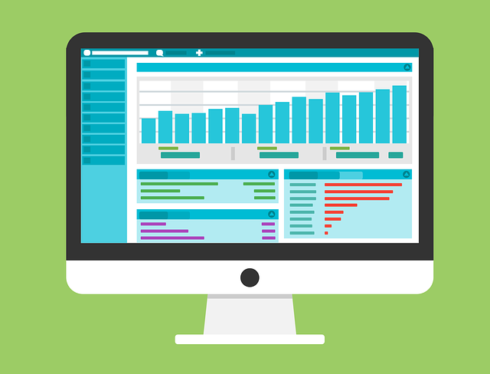
Continuous Integration and Continuous Delivery together (CI/CD) have become the goal for a majority of organizations. Meanwhile, modern technologies like Docker and Kubernetes have become widespread in production application environments. The result of these trends is that applications and their infrastructure are becoming increasingly dynamic: constantly changing to meet higher scalability requirements and fast-changing application functionality.
Yet the typical organization still relies on performance monitoring technology designed before CI/CD was the application delivery model. These solutions require significant manual effort from IT staff, hampering the ability of organizations to use staff time effectively, control IT spending, and gain meaningful visibility into their applications and infrastructure.
RELATED CONTENT:
Why manual performance management fails
APM: What it means in today’s complex software world
Adopting an automated performance management strategy is the only way organizations can break through application challenges and fully realize the opportunity presented by CI/CD powered application environments. Embracing automation at every layer of performance management enables organizations to reduce costs while improving outcomes.
Change is the new normal
It may sound like a cliché to observe that we live in a fast-changing world. From the perspective of IT organizations however, the fast-changing nature of today’s application environments is extreme. The faster a company can deliver new custom business applications; the more value IT is delivering. Effectively, this makes the ROI of IT go up!
This simple reality is driving the adoption of new techniques and technologies, particularly CI/CD (Continuous Integration & Continuous Delivery). CI/CD is an AUTOMATION exercise that enables delivery speed, better business capability, and ultimately improved quality for custom applications. The last stage in the CI/CD cycle is MONITORING. It follows, therefore, that the more automated and seamless the monitoring of a business application is, the easier it is to complete the CI/CD cycle and restart the loop of improving the application.
Implementing automated performance management
If manual monitoring is so laborious, then it begs the question: Why hasn’t every organization automated monitoring yet?
- Until recently, fully automatic monitoring technology did not exist.
- Software engineers tend to code their own solutions to problems, leading to the monitoring-as-code approach, which is functional in the short term, but is not maintainable or scalable.
- Teams try to leverage previous investments in legacy monitoring tools, hoping they will work in their new high-speed environments which unfortunately turns out to not be true.
RELATED CONTENT: Drawbacks to building your own performance monitoring
Not all automated application performance monitoring solutions are the same though. The solution you choose should include the following features:
- Automatic discovery and monitoring of the full infrastructure and application stack.
A key element of the CI/CD process that is missing today and is slowing down the release process.
- Real-time complex dependency mapping, with automatic updates for any change
Critical for root-cause analysis to address performance issues quickly.
- Automatic, rapid identification of performance problems
Quickly identifying performance issues based on automatic rule configuration and monitoring is the only way to minimize false positives and avoid application delivery delays.
- Rule configuration and alerting that use machine learning and artificial intelligence to establish dynamic baselines for healthy application behavior, then identify anomalies based on those baselines
This eliminates the need for tedious configuration, monitoring and data interpretation by humans, while minimizing false-positive alerts.
- Automatic monitoring setup: Agent deployment, code instrumentation, infrastructure discovery and more
Maximizing the data collected, while simultaneously minimizing the effort required from human admins to collect it
Performance management for today’s dynamic applications
With more workloads moving to dynamic technologies (29,000,000,000+ Docker downloads in 5 years), there are new realities for the pace and scale of change within application environments. More than half of organizations now use CI/CD company-wide, and the IT industry seems to be consolidating around the CI/CD terminology and methodologies.
Meanwhile, each of the major public cloud platforms (AWS, Azure and Google Cloud) now offer Kubernetes managed container processing as a service which are easily integrated into CI/CD delivery pipelines. It’s quite clear, there are major changes in the world of application construction and delivery.
Instana, the automatic performance management solution born in the age of microservices, cloud computing, and containers, can enable you to truly deliver on the promise of CI/CD. Designed specifically to manage the performance of dynamic, CI/CD driven application environments, Instana leverages artificial intelligence and automation to deliver comprehensive, actionable insight with no manual effort.
Regardless of your IT team size, automation is critical for an effective performance management strategy so that you can achieve high-speed delivery of new business services.
Content provided by Instana and SD Times





